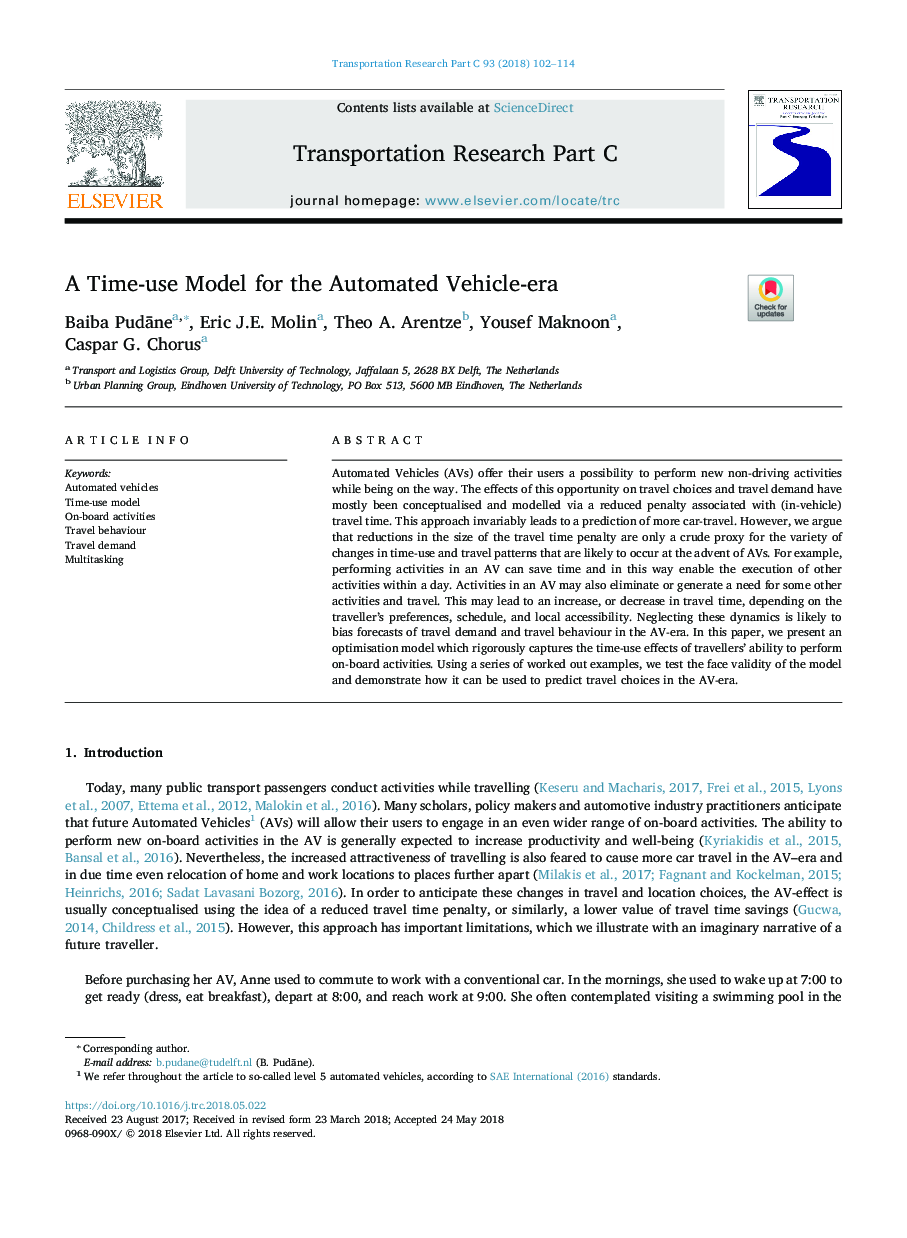| Article ID | Journal | Published Year | Pages | File Type |
|---|---|---|---|---|
| 6935733 | Transportation Research Part C: Emerging Technologies | 2018 | 13 Pages |
Abstract
Automated Vehicles (AVs) offer their users a possibility to perform new non-driving activities while being on the way. The effects of this opportunity on travel choices and travel demand have mostly been conceptualised and modelled via a reduced penalty associated with (in-vehicle) travel time. This approach invariably leads to a prediction of more car-travel. However, we argue that reductions in the size of the travel time penalty are only a crude proxy for the variety of changes in time-use and travel patterns that are likely to occur at the advent of AVs. For example, performing activities in an AV can save time and in this way enable the execution of other activities within a day. Activities in an AV may also eliminate or generate a need for some other activities and travel. This may lead to an increase, or decrease in travel time, depending on the traveller's preferences, schedule, and local accessibility. Neglecting these dynamics is likely to bias forecasts of travel demand and travel behaviour in the AV-era. In this paper, we present an optimisation model which rigorously captures the time-use effects of travellers' ability to perform on-board activities. Using a series of worked out examples, we test the face validity of the model and demonstrate how it can be used to predict travel choices in the AV-era.
Related Topics
Physical Sciences and Engineering
Computer Science
Computer Science Applications
Authors
Baiba PudÄne, Eric J.E. Molin, Theo A. Arentze, Yousef Maknoon, Caspar G. Chorus,
